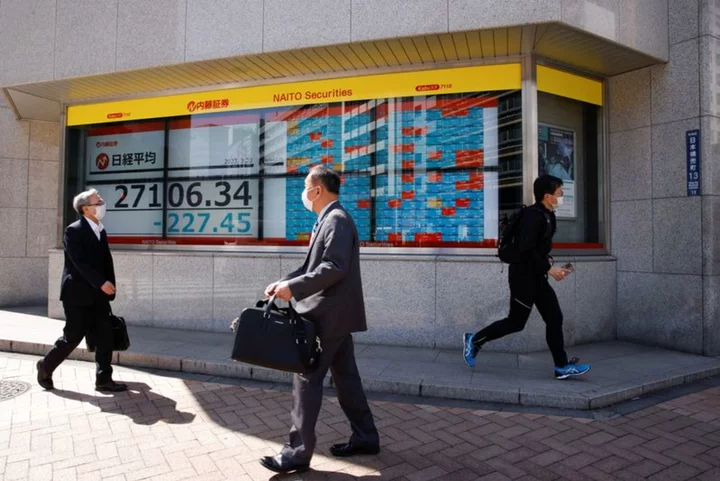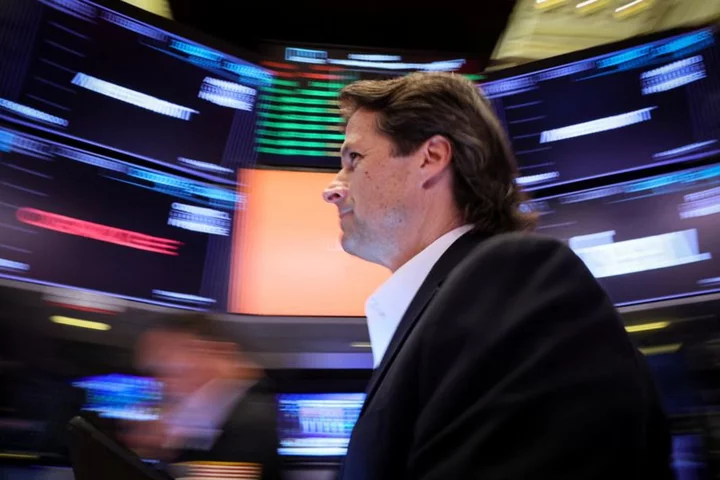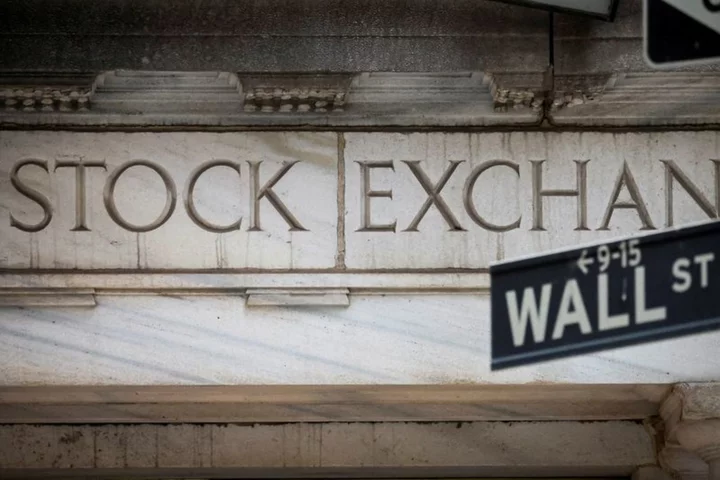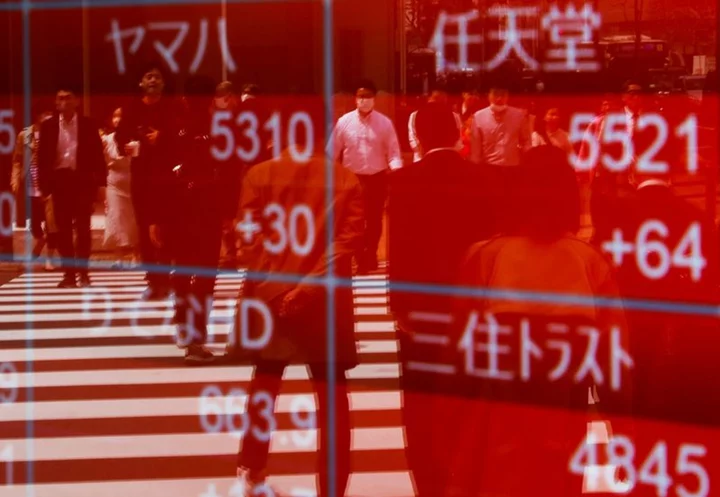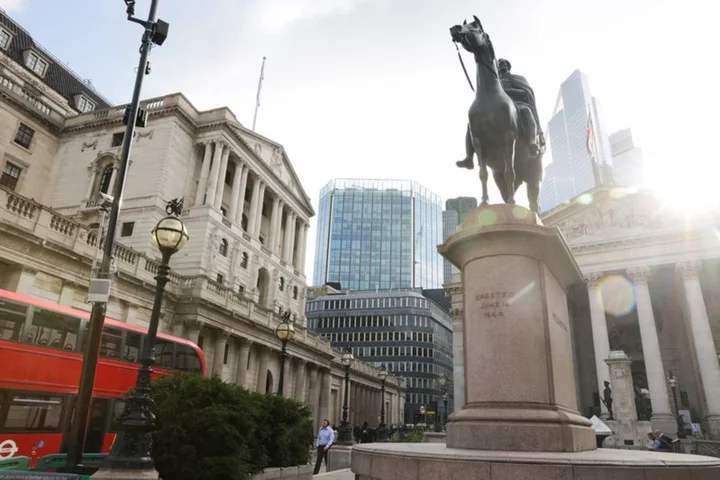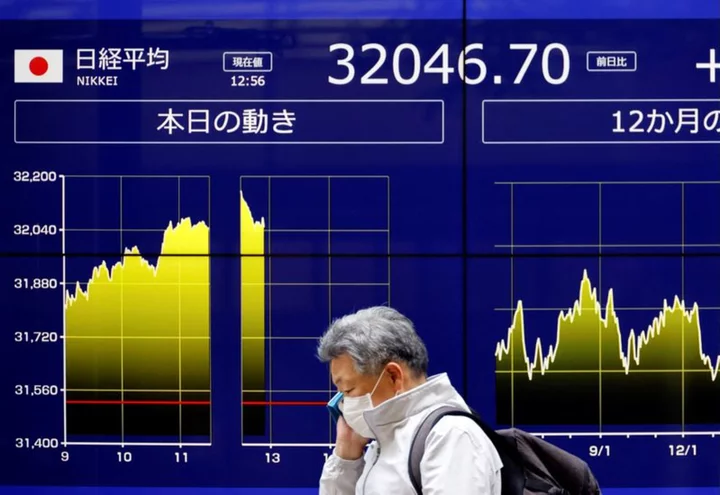The euro zone has slipped into recession and Chinese data has disappointed, warning signs for world markets relieved that the March banking turmoil has not led to a full on credit-crunch and a U.S. debt ceiling crisis has been averted.
"We are heading for a downturn and it varies region to region," said Benjamin Jones, director of macro research at Invesco. "There's a lot of debate and my degree of confidence is quite low."
Here's a look at what some closely-watched market indicators say about global recession risks:
1/ KICKING THE CAN DOWN THE ROAD?
The World Bank just raised its 2023 outlook as the U.S. and other major economies have proven more resilient than forecast, though it said this year will still mark one of the slowest for growth in the last five decades.
Goldman Sachs lowered its odds of a U.S. recession in the next year to 25% from an already below consensus 35%, given easing banking sector stress and the debt ceiling deal which it sees resulting in only small spending cuts.
The International Monetary Fund, meanwhile, no longer expects a UK recession this year. A Reuters poll anticipates a modest euro area rebound.
But the outlook is souring.
The World Bank expects 2024 growth to take a bigger toll than previously expected as higher interest rates and tighter credit bite.
Talk of stimulus in China to support the economy is growing. Global economic data is delivering negative surprises at the fastest rate since September, a Citi index shows.
2/ MONEY'S TOO TIGHT (TO MENTION)
European Central Bank chief Christine Lagarde says rate hikes are now forcefully feeding into bank lending.
Lending growth slowed further in April after banks in the first quarter reporting falling corporate demand for loans hit the highest share since 2008 and lending standards remained at their tightest since the 2011 euro zone debt crisis.
U.S. regional bank stocks have recovered ground since the March rout and deposit outflows have eased.
But banks were reporting a widespread tightening of lending standards by the end of the first quarter, even before the full impact of the banking crisis was felt.
Deutsche Bank notes that historically, the Federal Reserve starts to ease policy when the willingness to lend as measured by an index in the closely-watched Senior Loan Officer Opinion Survey nears zero.
That measure is now deep in negative territory, not a great sign.
3/ JOB CUTS
Labour markets across developed economies remain tight, but jobs cuts are rising.
According to global outplacement firm Challenger, Gray & Christmas, job cuts announced by U.S.-based employers rose 20% to 80,089 in May.
Britain's biggest broadband and mobile provider, BT Group, said last month it would cut up to 55,000 jobs by 2030 - potentially over 40% of its workforce. Telecoms giant Vodafone plans to cut 11,000 jobs globally over three years.
Invesco's Jones noted a lot more U.S. companies were talking about layoffs in their first quarter earnings.
"The tone of that starts to make me worry," he said.
4/ WHAT DEFAULTS? Companies are starting to feel the pinch from tighter lending conditions and costlier funding. Deutsche Bank expects an imminent default wave, with a peak in the fourth quarter of 2024. It forecasts peak default rates on U.S. loans will near an all-time high at 11.3%.
So far, markets seem little bothered.
The risk premium on U.S. and European junk bonds has gone down to early March levels after rising sharply on bank turmoil. Keeping markets supported, say analysts, are investors' defensive positioning and decent corporate earnings in the first quarter, though this may change soon.
5/ IF NOT NOW, WHEN?
Traders no longer expect a Fed rate cut this year, a far cry from the over 50 bps they bet on in March.
They still see U.S. rates falling to around 3.9% by September 2024, from 5%-5.25% currently.
So the U.S. Treasury yield curve remains deeply inverted, meaning longer-dated borrowing costs are lower than shorter-dated ones -- a gold-plated recession signal.
"If the curve continues to invert, it may be a sign of the market believing that more aggressive rate hikes than were previously predicted will be followed by earlier and faster rate cuts," said SEB chief European rates strategist Jussi Hiljanen.
(Reporting by Dhara Ranasinghe, Chiara Elisei, Alun John, Harry Robertson and Yoruk Bahceli; compiled by Yoruk Bahceli; Graphics by Prinz Magtulis and Pasit Kongkunakornkul; Editing by Ed Osmond)



